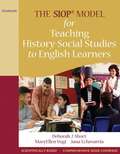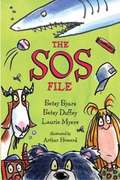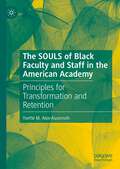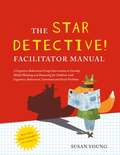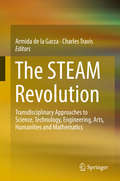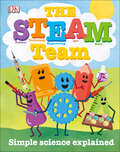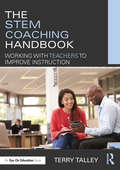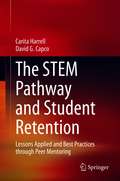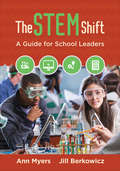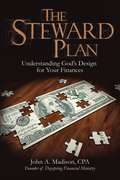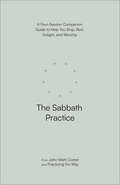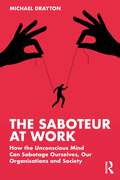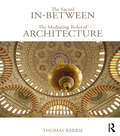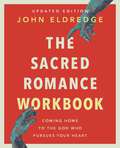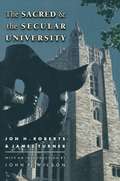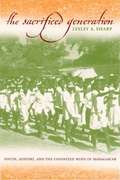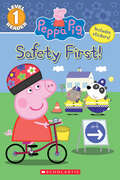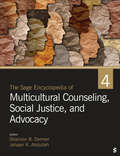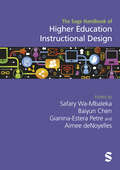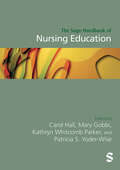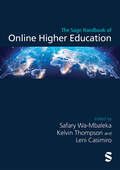- Table View
- List View
The SIOP Model Teaching History-Social Studies to English Learners
by Jana Echevarria Mary Ellen Vogt Deborah J. ShortThis highly anticipated book addresses the issues faced in teaching history-social studies to English learners (ELs) at each grade-level. SIOP techniques and activities organized around the eight SIOP components guide educators in promoting academic language development along with comprehensible content. <p><p> Written for SIOP teachers and those who have learned the SIOP Model, this book includes proven, effective lessons and comprehensive units. In addition, this book provides ideas to adapt the techniques for students at different levels of English proficiency. This book is sure to become an indispensable resource for history-social studies educators of English learners. <p><p> Presents a systematic process for teaching both the academic content of history-social studies and its associated academic language to English learners. Offers ideas and activities about teaching history-social studies and organizes activities by grade-bands–K-2, 3-5 (or 6), 6-8, and 9-12 and SIOP components. Provides use-tomorrow ideas and activities for implementing the eight components of the SIOP Model in a history-social studies classroom. Includes lesson plans and comprehensive units that illustrate how a particular activity can be effective for ALL students, not just English learners.
The SOS File
by Betsy Byars Betsy Duffey Laurie MyersThe students in Mr. Magro's class submit stories for the SOS File about their biggest emergencies, and then they read them aloud for extra credit.
The SOULS of Black Faculty and Staff in the American Academy: Principles for Transformation and Retention
by Yvette M. Alex-AssensohThis book employs a fiction-based approach to address the revolving door of Black faculty and staff in American colleges and universities as a national crisis that needs to be resolved systematically. Alex-Assensoh coins the acronym SOULS to promote the importance of safety, organizational accountability, unvarnished truth telling, love, and spirituality as the foundational ingredients for reimagining and rebuilding an Academy that harnesses the talents of Black faculty and staff. Chapters feature storytelling to illustrate common cracks in academic structures while interweaving interdisciplinary research to contextualize themes that the fiction-based method reveals. To conclude, the author provides a research-informed call to action within the context of institutional transformation, as well as reflective questions and recommendations for further reading.
The STAR Detective Facilitator Manual: A Cognitive Behavioral Group Intervention to Develop Skilled Thinking and Reasoning for Children with Cognitive, Behavioral, Emotional and Social Problems
by Professor Susan YoungThe STAR Program is designed to teach children and those involved in their care psychological techniques to improve self-control and prosocial competence. The program employs cognitive-behavioral therapy (CBT) principles and uses a child-centered approach to teach attention skills, emotional control, problem-solving, and interpersonal skills to children aged 8-12 who have cognitive, behavioral, social or emotional difficulties. This manual includes designated group sessions to be delivered by healthcare practitioners alongside individual coaching sessions to be provided by a family member or individual carer between each group meeting. Extra materials include PowerPoint presentations, and a Thinking Tools resource, which are available to download from the JKP website.
The STEAM Revolution: Transdisciplinary Approaches to Science, Technology, Engineering, Arts, Humanities and Mathematics
by Charles Travis Armida de la GarzaThis volume is dedicated to collaborative research across STEM disciplines, the arts and humanities. It includes six sections, framed from a global perspective and exhibits contributions from key experts in the field, emerging scholarly voices, and STEAM practitioners. The added value of STEAM projects in research is highlighted in the first section of this book. Ranging from the spatial, medical and environmental humanities to heritage science, this section discusses the course and paths STEAM projects may evolve to in the near future. The second section features reflective essays by scientists and artists on the development of their research, their professional growth and personal learning experiences that the art/science collaborations have afforded their work and careers. Sections III and IV provides practical guidance and advice on facilitating STEAM teams and describe successful collaborative projects. By presenting the objectives and outcomes of relevant research, the chapters in these sections discuss the various steps taken by different teams to achieve project fruition. Paying particular attention to barriers inhibiting STEAM collaboration, these sections also explore the ways in which research teams were able to work effectively. The fifth section presents a review of policy issues and the potential impacts of STEAM research for administrators, funders and policy makers. In its pursuit for balance and inclusion, the volume concludes with a critical reflection on STEAM that argues a different perspective and will prove food for thought to readers.
The STEAM Team: Simple Science Explained
by Lisa BurkeThe zany characters of The STEAM Team will guide kids through this engaging, fact packed kid's book all about the key subjects - science, technology, engineering, art, and math.An excellent introduction for children ages 5-7 to understanding these concepts, The STEAM Team is a colorful, well-presented education book for children that will get your little ones crazy for STEAM subjects!This brightly illustrated science book for kids breaks down STEAM subjects and complicated ideas into fun and easily understandable pieces. Join The STEAM Team to unravel the mysteries of science for kids - find out how robots work, what a food chain is, where lightning comes from, and much more!The STEAM Team characters (Science, Technology, Engineering, Art, and Math) guide the reader through the book and are always on hand with tips, fun facts, and simple explanations. The ingeniousness of The STEAM Team is the characters - keeping little ones engaged and engrossed throughout. In these pages the Team cover living things, the human body, space, physics, geography, math, engineering, and chemistry. This book is a fantastic first children's book for kids starting to learn STEAM subjects in school, or who are developing an insatiable interest in the world around them.Meet The Steam Team!The STEAM Team is made up of five cool characters (subjects) that work together to show you how the world works. Science is all about asking questions and discovering the answers to explain how things work. Technology uses science to create new machines and effective ways of doing things. Engineering is all about finding and designing solutions to problems - using science, technology, and math. Art is all about using your imagination and style to create brilliant new things. Math is about numbers, patterns, and problem solving. They are the perfect team to teach you all about STEAM - Science, Technology, Engineering, Art, and Math!Find out what science is, why it is so important, and how it relates to the world around you. Discover how machines work, what a food web is, why boats float, where lightning comes from, and much much more!From Amphibians to Darwin to the Internet, this book is full of interesting STEAM facts covering: - The Universe- Plants- Robots- The human body- Measuring- Climate Change- And so much more!If you are looking to add more books to your collection that answer the questions about the world, give Ask A Scientist a try for the little "why?" askers in your life.
The STEM Coaching Handbook: Working with Teachers to Improve Instruction
by Terry TalleyLearn how to promote STEM integration in your school district and increase student achievement. In this helpful, easy-to-read book, author Terry Talley sheds light on the key responsibilities and accountabilities of a successful STEM coach and offers a wealth of practical advice for those new to the position and for those who want to refine their skills. You’ll discover how to… Build positive working relationships with teachers and faculty Organize professional development opportunities such as PLCs and book study groups Develop hands-on instructional strategies based off the needs of your students and the strengths of your staff Promote technological and scientific literacy to prepare students for success in the 21st Century Enhance student engagement using project-based learning and growth-based assessment models Designed to be read either as a step-by-step guide or as a reference, The STEM Coaching Handbook is loaded with insights and accounts from experienced STEM educators across the country. No matter your level of expertise, these tips will help you make your district’s STEM program more effective for all students.
The STEM Pathway and Student Retention: Lessons Applied and Best Practices through Peer Mentoring
by David G. Capco Carita HarrellThis work introduces methods that aid in freshman retention (in the transition from high school and to remain in the university of origin) and orient them towards a successful career in science. Specific examples of successful approaches are given as well as detailed plans for how to engage these students. Pitfalls as well as success are described. In addition this work provides a detailed description of how to develop the students into a cohort that exhibits comradery. Three types of cohort form, those within the freshman class, those among the upperclassmen and those between the freshmen and upperclassmen. The program works because the social reality is that the peer mentor has a better repertoire with the first semester freshmen than the faculty or staff and assists with student success. Factors such as financial aid, policy, and support systems influence student success. In the sciences, students often struggle with the content and adjusting to the college experience. Research states that a mentorship program supports retention as well as enhances the student experience during college. This program creates a cohort group among the upperclassmen mentors and freshmen and provides leadership development for all involved.
The STEM Shift: A Guide for School Leaders
by Ann P. Myers Jill BerkowiczAll you need to make the shift to STEM a reality! Now more than ever, educational leaders are encouraged to implement STEM as the foundation for preparing students with the 21st century skills required for college and career readiness. This resource makes the process of shifting to a comprehensive, integrated STEM school or district within reach! Invaluable case studies featuring current STEM pioneers from across the country model how successful, STEM-centered learning takes place. You’ll find process-specific best practices and strategies to help you: Understand, create, and lead the STEM change process Transform existing school programs Prepare the school community for STEM and plan for STEM integration Integrate 21st Century Skills, the arts, and humanities Create essential partnerships with business and higher education Includes step-by-step checklists and visual mapping guides for successfully navigating the STEM change process. Use this groundbreaking resource to systematically implement coherent and integrated STEM instruction that transforms learning and prepares students for the global economy! Video and web content also available at http://bit.ly/TheSTEMShift. "Finally! A great book that clearly explains what STEM education is, why we need it, and how to do it well. A must-read for all educators, parents, and policymakers." Tony Wagner, author of The Global Achievement Gap and Creating Innovators "Reading Jill and Ann′s column in Education Week has been a critical part of my weekly reading since they′ve begun writing it. I′ve learned a lot from those short snippets, and now it′s exciting to see their expanded thoughts in The Stem Shift. You can′t go wrong by reading anything they write!" Larry Ferlazzo, High school teacher and Ed Week columnist
The STEM Shift: A Guide for School Leaders
by Ann P. Myers Jill BerkowiczAll you need to make the shift to STEM a reality! Now more than ever, educational leaders are encouraged to implement STEM as the foundation for preparing students with the 21st century skills required for college and career readiness. This resource makes the process of shifting to a comprehensive, integrated STEM school or district within reach! Invaluable case studies featuring current STEM pioneers from across the country model how successful, STEM-centered learning takes place. You’ll find process-specific best practices and strategies to help you: Understand, create, and lead the STEM change process Transform existing school programs Prepare the school community for STEM and plan for STEM integration Integrate 21st Century Skills, the arts, and humanities Create essential partnerships with business and higher education Includes step-by-step checklists and visual mapping guides for successfully navigating the STEM change process. Use this groundbreaking resource to systematically implement coherent and integrated STEM instruction that transforms learning and prepares students for the global economy! Video and web content also available at http://bit.ly/TheSTEMShift. "Finally! A great book that clearly explains what STEM education is, why we need it, and how to do it well. A must-read for all educators, parents, and policymakers." Tony Wagner, author of The Global Achievement Gap and Creating Innovators "Reading Jill and Ann′s column in Education Week has been a critical part of my weekly reading since they′ve begun writing it. I′ve learned a lot from those short snippets, and now it′s exciting to see their expanded thoughts in The Stem Shift. You can′t go wrong by reading anything they write!" Larry Ferlazzo, High school teacher and Ed Week columnist
The STEWARD Plan: Understanding God's Design for Your Finances
by John A. Madison, CPA.Does the Bible really offer guidance for the complicated financial system in our world today? CPA, author and personal financial counselor John Madison offers a resounding yes! Since retiring from full-time work as a CPA at the age of 49, he has written his new book, The Steward Plan, which explores how following Biblical guidelines can lead people at any stage of life to financial success God&’s way.The Steward Plan covers many aspects of becoming the financial steward God desires, including how to set financial goals, tithing guidance and strategies, creating a blueprint for spending, eliminating debt from your life, growing your wealth wisely over time, removing unnecessary risk from your financial life, and developing a plan to bless future generations. Combining Scripture with practical and easy-to-understand financial terms, The Steward Plan will help you gain control over your money and live the life God designed for you.The Steward Plan is an outgrowth of Dayspring Financial Ministry, whose mission is to teach Biblical financial stewardship. Like all of Dayspring&’s programs, The Steward Plan does not promote or attempt to sell any specific insurance or investing products. It is an independent source of financial information and education, free of any bias, other than conformity with Scripture.
The Sabbath Practice: A Four-Session Companion Guide to Help You Stop, Rest, Delight, and Worship
by Practicing the Way John Mark ComerIn our era of chronic exhaustion, learn how setting aside 24 hours to stop, rest, delight, and worship restores joy and spiritual vitality in this guide from New York Times bestselling author John Mark Comer and the team at Practicing the Way.This Companion Guide to the Sabbath Practice from Practicing the Way provides a practical, accessible approach to incorporating this life-giving rhythm into your weekly routine. Designed to be used with four engaging video sessions freely available online, this guide offers spiritual exercises, reflection questions, and additional resources to help you and your community experience Sabbath as the best part of your week.This guide will help you:• Understand the biblical foundations of Sabbath• Learn to &“stop&” and align with a rhythm God built into the fabric of creation• Develop personal practices for meaningful rest, play, and communal celebration• Resist internal and external forces that war against Sabbath• Cultivate a spirit of worship that extends throughout your weekDiscover how setting aside 24 hours can transform every day of your week, leading to a deeper connection with God, others, and your own soul.
The Saboteur at Work: How the Unconscious Mind Can Sabotage Ourselves, Our Organisations and Society
by Michael DraytonThe Saboteur at Work describes how unconscious psychological processes can sabotage individual lives, the functioning of groups, teams and organisations, and even global politics. Drawing on research in the fields of psychology and organisations, this comprehensive yet straightforward and accessible book enables you to understand how the unconscious can impact progress and performance and describes practical techniques you can use to overcome the saboteur, individually and at work. The book discusses the modern understanding of our adaptive unconscious, and you will learn about repression, imposter syndrome and other defence mechanisms. Ideas are brought to life using real-world examples and personal, organisational and national stories. The book explores the mind’s capacity for self-deception by telling the story of Tony Blair and the invasion of Iraq and looks at unconscious processes in organisations, asking what role the saboteur played in huge corporate failures such as the collapse of Barings Bank and the Boeing 737 Max scandal. The saboteur also operates on a larger scale – governments and societies can be sabotaged by this unconscious force. In Nazi Germany, how did normal, decent people behave like monsters, colluding with or actively participating in the murder of innocent people? Why did big US corporates like IBM, Ford and Chrysler work with the Nazis to make the Holocaust possible? If you manage a team or lead an organisation, you need to understand the role played by the saboteur in your workplace and in your own career and life. This book enables leaders and managers to develop their leadership skills by understanding how the unconscious impacts individual, group and social processes. It will also be of use to coaches and organisational consultants working in the areas of teams and performance.
The Sacred In-Between: The Mediating Roles of Architecture
by Thomas BarrieThe sacred place was, and still is, an intermediate zone created in the belief that it has the ability to co-join the religious aspirants to their gods. An essential means of understanding this sacred architecture is through the recognition of its role as an ‘in-between’ place. Establishing the contexts, approaches and understandings of architecture through the lens of the mediating roles often performed by sacred architecture, this book offers the reader an extraordinary insight into the forces behind these extraordinary buildings. Written by a well-known expert in the field, the book draws on a unique range of cases, reflecting on these inspiring places, their continuing ontological significance and the lessons they can offer today. Fascinating reading for anyone interested in sacred architecture.
The Sacred Romance Workbook, Updated Edition: Coming Home to the God Who Pursues Your Heart
by John EldredgeThe voice catches us off guard, whether in the middle of the day or the dead of night. It is the voice of God, wooing our hearts with words that seem too good to be true. Listen to me—there is something missing. You long to be in a love affair, a great adventure. You were made for more. You know it.Yet another voice, often louder, competes for our attention. The Message of the Arrows has assaulted us since childhood. The enemy knows if he can get us to lose heart, we will lose everything. How are we to make sense of these terribly opposed messages?The Sacred Romance pulls the curtain back on the cosmic drama that God's been weaving since before time began. In this updated edition, you will discover:How your current life is far too safe compared to the larger story God has for you;How to know God as the Great Romancer and embrace his love for you;How the enemy tries to destroy you through the Message of the Arrows; andHow to enter into and remain in the Sacred Romance with Jesus.This workbook is a companion to The Sacred Romance by John Eldredge and is a guided journey filled with questions, exercises, journaling ideas, and explorations of the arts that will take you into the heart of God and lead to the recovery of your own heart.
The Sacred and the Secular University (The William G. Bowen Series #34)
by James Turner Jon H. RobertsAmerican higher education was transformed between the end of the Civil War and the beginning of World War I. During this period, U.S. colleges underwent fundamental changes--changes that helped to create the modern university we know today. Most significantly, the study of the sciences and the humanities effectively dissolved the Protestant framework of learning by introducing a new secularized curriculum. This secularization has long been recognized as a decisive turning point in the history of American education. Until now, however, there has been remarkably little attention paid to the details of how this transformation came about. Here, at last, Jon Roberts and James Turner identify the forces and explain the events that reformed the college curriculum during this era.The first section of the book examines how the study of science became detached from theological considerations. Previously, one of the primary pursuits of "natural scientists" was to achieve an understanding of the workings of the divine in earthly events. During the late nineteenth century, however, scientists reduced the scope of their inquiries to subjects that could be isolated, measured, and studied objectively. In pursuit of "scientific truth," they were drawn away from the larger "truths" that they had once sought. On a related path, social scientists began to pursue the study of human society more scientifically, attempting to generalize principles of behavior from empirically observed events.The second section describes the revolution that occurred in the humanities, beginning in the mid-nineteenth century, when the study of humanities was largely the study of Greek and Latin. By 1900, however, the humanities were much more broadly construed, including such previously unstudied subjects as literature, philosophy, history, and art history. The "triumph of the humanities" represented a significant change in attitudes about what constituted academic knowledge and, therefore, what should be a part of the college curriculum.The Sacred and the Secular University rewrites the history of higher education in the United States. It will interest all readers who are concerned about American universities and about how the content of a "college education" has changed over the course of the last century."[Jon Roberts and James Turner's] thoroughly researched and carefully argued presentations invite readers to revisit stereotypical generalizations and to rethink the premises developed in the late nineteenth century that underlie the modern university. At the least, their arguments challenge crude versions of the secularization thesis as applied to higher education."--From the foreword by William G. Bowen and Harold T. Shapiro
The Sacrificed Generation: Youth, History, and the Colonized Mind in Madagascar
by Lesley A. SharpYouth, historical consciousness, and political agency in independent Francophone Africa are the themes that frame this study about Madagascar.
The Safety First! (Scholastic Reader, Level 1)
by Courtney CarbonePeppa Pig and her class learn all about safety in this Level 1 reader with stickers, based on the hit Nick Jr. TV show!Police Officer Panda and Police Officer Squirrel are visiting Peppa's class for an important lesson on safety!This Level 1 beginning reader is based on the hit Nick Jr. television show.
The Sage Encyclopedia of Multicultural Counseling, Social Justice, and Advocacy
by Shannon B. Dermer Jahaan R. AbdullahSince the late 1970s, there has been an increase in the study of diversity, inclusion, race, and ethnicity within the field of counseling. The SAGE Encyclopedia of Multicultural Counseling, Social Justice, and Advocacy will comprehensively synthesize a wide range of terms, concepts, ideologies, groups, and organizations through a diverse lens. This encyclopedia will include entries on a wide range of topics relative to multicultural counseling, social justice and advocacy, and the experiences of diverse groups. The encyclopedia will consist of approximately 600 signed entries, arranged alphabetically within four volumes.
The Sage Encyclopedia of Multicultural Counseling, Social Justice, and Advocacy
by Shannon B. Dermer Jahaan R. AbdullahSince the late 1970s, there has been an increase in the study of diversity, inclusion, race, and ethnicity within the field of counseling. The SAGE Encyclopedia of Multicultural Counseling, Social Justice, and Advocacy will comprehensively synthesize a wide range of terms, concepts, ideologies, groups, and organizations through a diverse lens. This encyclopedia will include entries on a wide range of topics relative to multicultural counseling, social justice and advocacy, and the experiences of diverse groups. The encyclopedia will consist of approximately 600 signed entries, arranged alphabetically within four volumes.
The Sage Handbook of Higher Education Instructional Design
by Safary Wa-Mbaleka Baiyun Chen Gianina-Estera Petre Aimee DeNoyellesWith contributions from leading experts and emerging voices in the field, The Sage Handbook of Higher Education Instructional Design is an indispensable resource for anyone engaged in the evolving practice of instructional design in higher education. This handbook explores innovative applications and provides comprehensive guidance on integrating instructional design principles across diverse educational contexts. It highlights how design innovations can address the unique challenges of higher education and contribute to enhancing learning experiences. This handbook is essential for instructional designers, team leaders, university students, online education leaders, researchers, faculty, and support personnel. It covers a wide range of institutions and program formats, including online, face-to-face, blended, and hybrid environments. By focusing on the practicalities of instructional design, this handbook prepares educators and designers to adapt to the dynamic conditions of modern higher education. Whether you are directly involved in instructional design or seeking to understand its impact on higher education, this handbook offers valuable insights and practical guidance to navigate and excel in this evolving field. Section 1: Foundations of Higher Education Instructional Design Section 2: Instructional Design Theories and Models Section 3: Practical Strategies and Methods Section 4: Instructional Design Scenarios Section 5: Curriculum-Level Issues Section 6: Instructional Technology Tools Section 7: Research in Higher Education Instructional Design
The Sage Handbook of Higher Education Instructional Design
by Safary Wa-Mbaleka Baiyun Chen Gianina-Estera Petre Aimee DeNoyellesWith contributions from leading experts and emerging voices in the field, The Sage Handbook of Higher Education Instructional Design is an indispensable resource for anyone engaged in the evolving practice of instructional design in higher education. This handbook explores innovative applications and provides comprehensive guidance on integrating instructional design principles across diverse educational contexts. It highlights how design innovations can address the unique challenges of higher education and contribute to enhancing learning experiences. This handbook is essential for instructional designers, team leaders, university students, online education leaders, researchers, faculty, and support personnel. It covers a wide range of institutions and program formats, including online, face-to-face, blended, and hybrid environments. By focusing on the practicalities of instructional design, this handbook prepares educators and designers to adapt to the dynamic conditions of modern higher education. Whether you are directly involved in instructional design or seeking to understand its impact on higher education, this handbook offers valuable insights and practical guidance to navigate and excel in this evolving field. Section 1: Foundations of Higher Education Instructional Design Section 2: Instructional Design Theories and Models Section 3: Practical Strategies and Methods Section 4: Instructional Design Scenarios Section 5: Curriculum-Level Issues Section 6: Instructional Technology Tools Section 7: Research in Higher Education Instructional Design
The Sage Handbook of Nursing Education
by Carol Hall Patricia S. Yoder-Wise Mary Gobbi Kathryn Whitcomb ParkerIn the past several years, a revival of research devoted to nursing education has emerged. This emergence has changed the way many educators engage in their practice of working with learners; and learners have come to expect that they will have a rich learning experience designed to develop new (or enhance prior) knowledge, skills, and attitudes. The SAGE Handbook of Nursing Education provides a detailed map of the current discipline, with a carefully selected team of international contributors offering the latest thinking about education in nursing across key areas. This handbook will be a key resource for academic educators, as well as graduate and postgraduate learners.
The Sage Handbook of Nursing Education
by Carol Hall Patricia S. Yoder-Wise Mary Gobbi Kathryn Whitcomb ParkerIn the past several years, a revival of research devoted to nursing education has emerged. This emergence has changed the way many educators engage in their practice of working with learners; and learners have come to expect that they will have a rich learning experience designed to develop new (or enhance prior) knowledge, skills, and attitudes. The SAGE Handbook of Nursing Education provides a detailed map of the current discipline, with a carefully selected team of international contributors offering the latest thinking about education in nursing across key areas. This handbook will be a key resource for academic educators, as well as graduate and postgraduate learners.
The Sage Handbook of Online Higher Education
by Safary Wa-Mbaleka Kelvin Thompson Leni CasimiroThe SAGE Handbook of Online Higher Education presents a cutting-edge collection of 50 essays that explores the rapidly evolving landscape of online teaching and learning in higher education. Assembled and contributed by a team of leading experts, the Handbook adopts a uniquely holistic approach to examining the needs of online education. Chapters bring together voices from diverse and international backgrounds to provide insights applicable to a broad range of contexts, and present practical strategies for planning, delivering quality online higher education. The handbook covers a wide range of topics, including online pedagogy, instructional design, student engagement, technological innovation, assessment, leadership, and the developing role of online education in the context of broader societal and cultural shifts. The SAGE Handbook of Online Higher Education is an essential resource for educators, researchers, policymakers, and practitioners who seek to understand and shape the future of higher education in the digital age. Section 1: Fundamentals of Online Education Section 2: Online Education Around the World Section 3: Online Instructional Design Section 4: Online Instructional Delivery Section 5: Instructional Technology for Online Education Section 6: Online Education Administration and Management Section 7: Student Support Services
